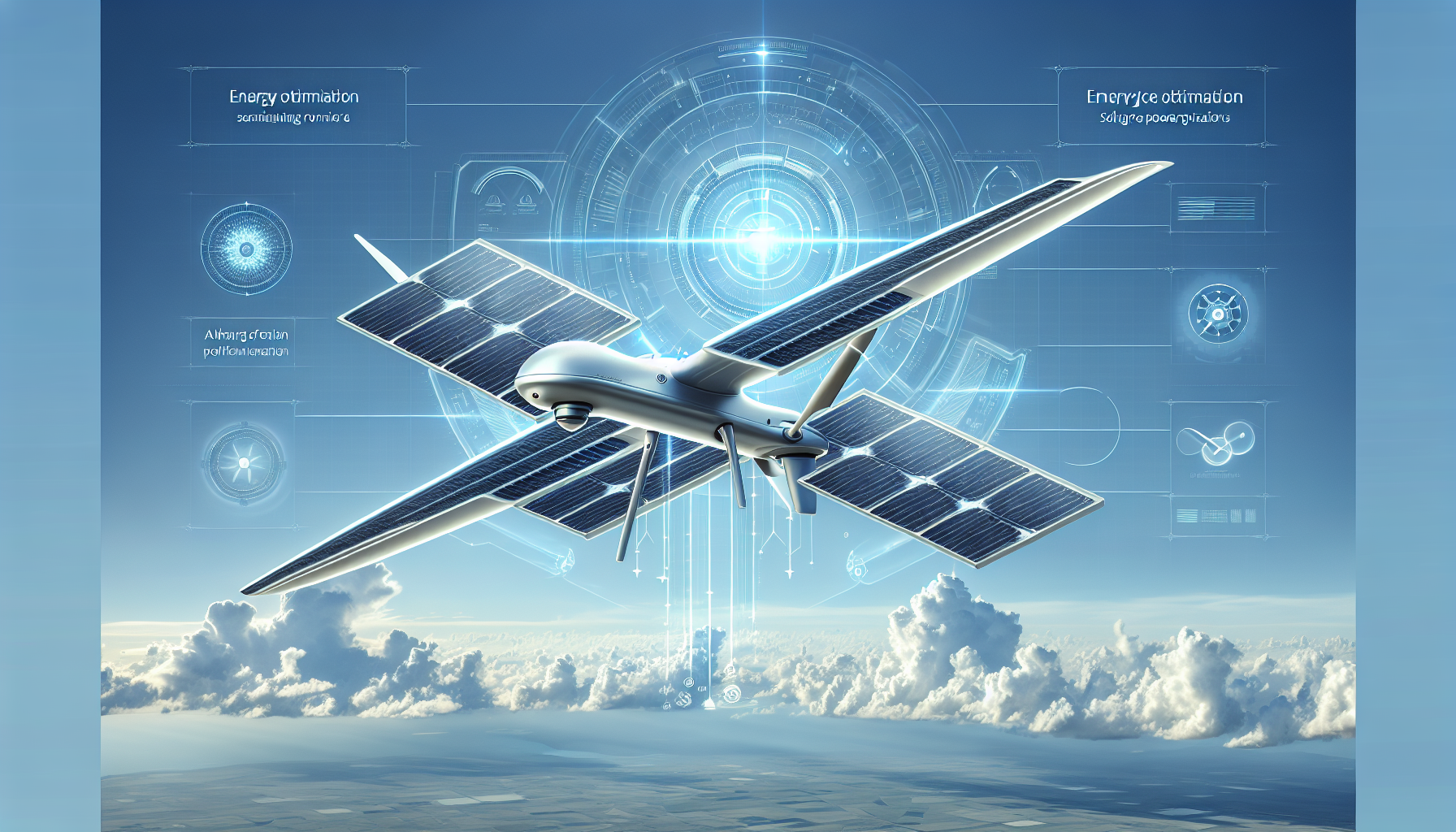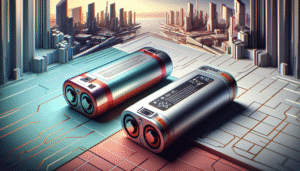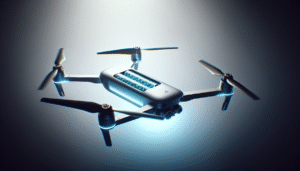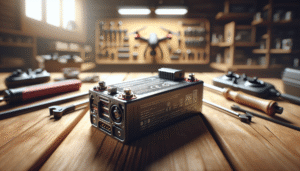Have you ever been in the middle of an exhilarating drone flight, only to have your fun cut short by a sudden low-battery alert? Trust me, I know that heart-sinking moment all too well. Drones are amazing gadgets that have taken aerial photography, videography, and recreational flying to new heights. But, just like any other technology, they come with their own set of limitations—chief among them is battery life. If you’re anything like me, always yearning for just a bit more time in the sky, you’ve come to the right place. Together, let’s explore some helpful tips to get the most out of your drone’s flight time.

Understanding Your Drone’s Battery
Before we jump into optimization tips, it’s crucial to understand what you’re working with. The battery is the heart of your drone, pumping energy to every part that needs it. Different drones utilize different battery technologies, but the most common are Lithium Polymer (LiPo) batteries, known for their excellent energy-to-weight ratio.
The Basics of LiPo Batteries
LiPo batteries are delicate creatures, requiring careful handling. They consist of multiple cells, each providing a certain voltage. A standard drone might use a 3-cell battery, offering a combined 11.1 volts. The capacity of these batteries is measured in milliamp-hours (mAh), indicating how much energy they can store. For example, a 3,000 mAh battery can supply a continuous current of 3,000 milliamps for one hour.
The Challenges of Battery Life
Like magic lamps with limited wishes, drone batteries give you only so much before they need a break. Factors such as weather conditions, drone weight, flying style, and the age of the battery itself play significant roles in determining flight time. Knowing these variables helps improve how we manage power in our drones.
1. Choose the Right Battery
Not all batteries are created equal; selecting the right one can make a world of difference. Nothing’s worse than feeling like you’ve bought designer shoes only to find they don’t fit well. When it comes to drone batteries, consider these factors:
- Capacity and Voltage: Match the battery capacity to your needs. Higher capacity means longer flight times but at the expense of increased weight.
- Compatibility: Check that the battery you choose is compatible with your drone model. The wrong voltage or connector type can lead to disastrous outcomes.
- Brand Reputation: Stick to trusted brands that offer consistent performance.
Choosing the right battery is not just about longer flight times. It’s about ensuring safety, reliability, and peace of mind.

2. Keep Your Drone as Light as Possible
You know that satisfying feeling of lightening your backpack before a day hike? The same principle applies to drones. The lighter the load, the longer you can soar. To maximize efficiency:
- Remove Unnecessary Accessories: Extra cameras, guards, or decals might look cool but add weight.
- Minimize Payloads: If you’re not shooting professional-grade video, consider using a lighter camera or none at all.
- Streamline Parts: Use lightweight propellers and landing gear, which can reduce the overall strain on the motor.
Creating a truly aerodynamic setup not only boosts flight time but can also make piloting more enjoyable.
3. Optimize Your Flight Path
It’s all about thinking ahead and planning properly. Drone flights are comparable to a well-run errand. You wouldn’t head to the grocery store and the bank in a zigzag pattern. Similarly:
- Plan Efficient Routes: Use software or apps to map out direct routes.
- Avoid Unnecessary Stops and Starts: Consistent speed consumes less energy than constant acceleration and deceleration.
- Utilize Wind: Flying with the wind rather than against it can help conserve battery life.
Efficiency is the name of the game. A well-thought-out path isn’t just faster; it takes artistry to steer a drone in the most fuel-efficient manner.
4. Monitor Weather Conditions
Weather is the unruly guest at your flying party. It does what it wants, and you’re forced to adapt. Keep these weather-related tips in mind:
- Avoid High Winds: Fighting against strong winds uses extra power.
- Consider Temperature: Batteries perform poorly in extreme cold or hot conditions. Try to fly on a temperate day to get more out of your charge.
- Check Humidity and Rain: Moisture is generally a no-go for electronics.
Being a cautious pilot can pay dividends when it comes to flight times. Respect Mother Nature, and she might just let you have a bit more airtime.
5. Properly Maintain Your Drone and Battery
Now for the responsible-flier segment of our program. Like changing the oil in your car, regular maintenance keeps your drone in tip-top shape:
- Store Batteries Wisely: Keep them at room temperature and at about 50% charge for longer periods of inactivity.
- Keep Propellers in Good Shape: Damaged or dirty propellers require more energy to achieve lift.
- Regular Software Updates: These can include energy-saving optimizations and bug fixes.
Neglecting these mundane but essential practices is like skipping dental check-ups. It might save time now, but you’ll pay later.
6. Master the Art of Flying
Sometimes, it’s not just about what you do, but how you do it. Like becoming good at parallel parking, flying your drone efficiently is an art form. Consider:
- Smooth Maneuvers: Jerky movements or aggressive accelerations gulp down power.
- Hover Wisely: While hovering, choose low-power modes if your drone allows it.
- Altitude Matters: Flying lower typically requires less power, especially if the air is dense or winds are challenging.
Seasoned pilots make it all look easy, but don’t be fooled. Getting better requires practice and patience.
7. Use Low Power Modes and Settings
Finally, the age-old tech tip—make use of those low-power modes that most devices come with today:
- Fly in Eco Mode: Some drones offer settings to optimize flight for longer duration.
- Adjust Camera Settings: Lower video quality when high-resolution isn’t necessary.
- Disable Non-Essential Features: Turn off LEDs or balance modes you don’t need.
Convenience is a wonderful byproduct of the digital age. Using technology wisely can make an evening of flying feel almost infinite.
Quick Look Table: Maximizing Flight Time
| Tip | Quick Win |
|---|---|
| Choose the Right Battery | Higher capacity, reputable brand |
| Lighten the Drone | Remove excess weight, use lightweight parts |
| Optimize Flight Path | Plan efficient routes, minimize stops and starts |
| Check Weather Conditions | Avoid high winds, extreme temperatures |
| Maintain Drone and Battery | Store at room temperature, update software |
| Master Flying Techniques | Practice smooth movements, avoid excessive hovering |
| Use Low Power Modes | Switch to Eco Mode, adjust camera settings |
The combination of understanding, planning, and even a little imagination carries potential to stretch those precious minutes aloft. Each of these tips is like one more ingredient added to a pot of stew—individfully competent, but together creating something truly satisfying. Once you start improving your flight time, flying your drone becomes an art, an obsession almost, to see how long you can stay up there before reluctantly bringing your mechanical bird back home.
Flying drones is as much science as it is art, one that fascinates me and has challenged my sense of ingenuity in ways other hobbies never could. Together, we’ve explored some tricks of the trade—from lightweighting and efficient flight routes to weather-watching and careful battery management. Each tip is a tool you’ll use to become a more proficient and conscientious pilot.
Now here’s the bigger question—how willing are you to practice these little habits and make them part of your preflight checklist? With nuanced skill and calculated methods, your sky-time might just stretch a little bit longer. Safe flying! Or as close to safe as possibly achieved while skywriting loop-de-loops with a buzzing piece of flying technology.


